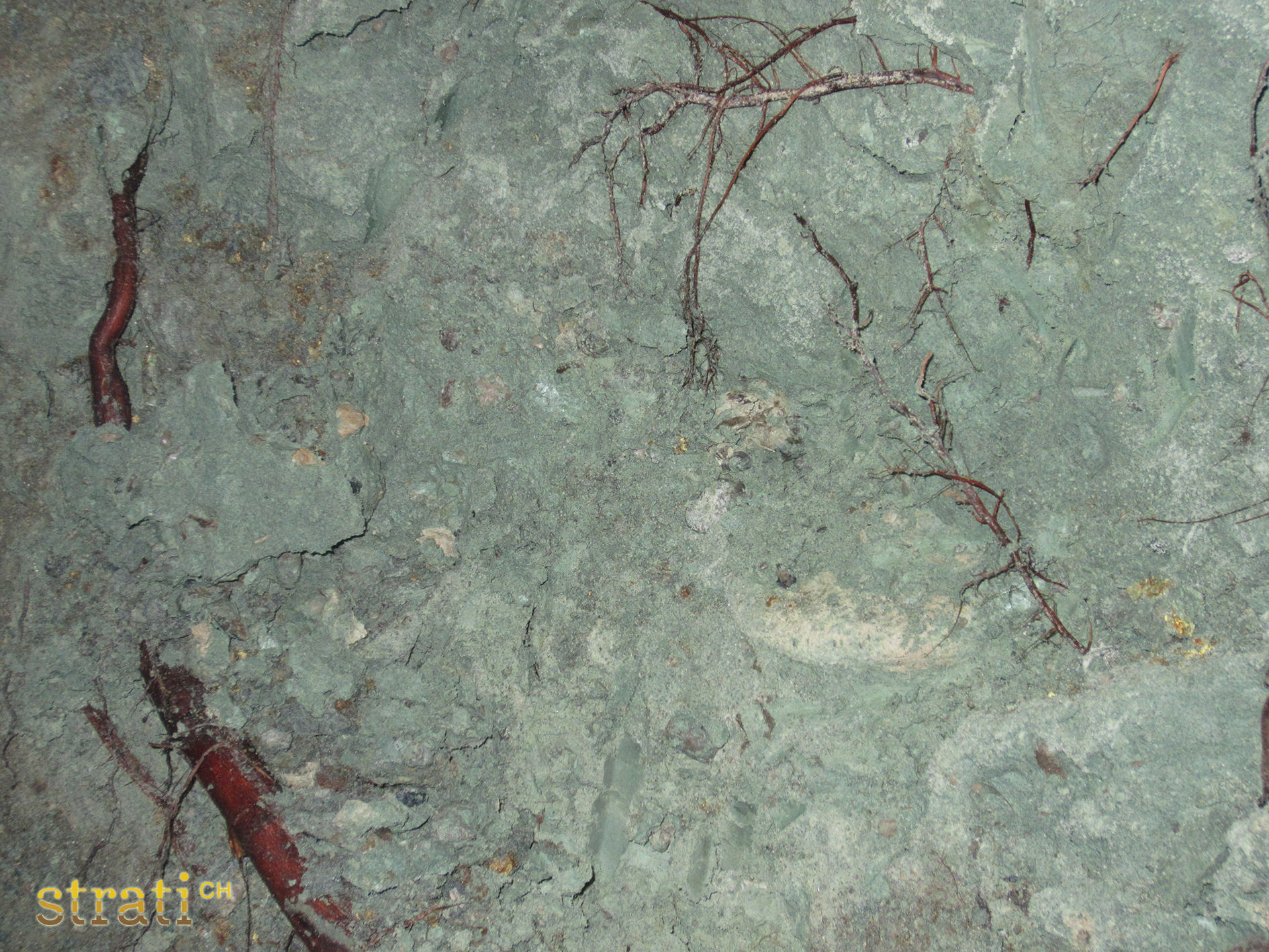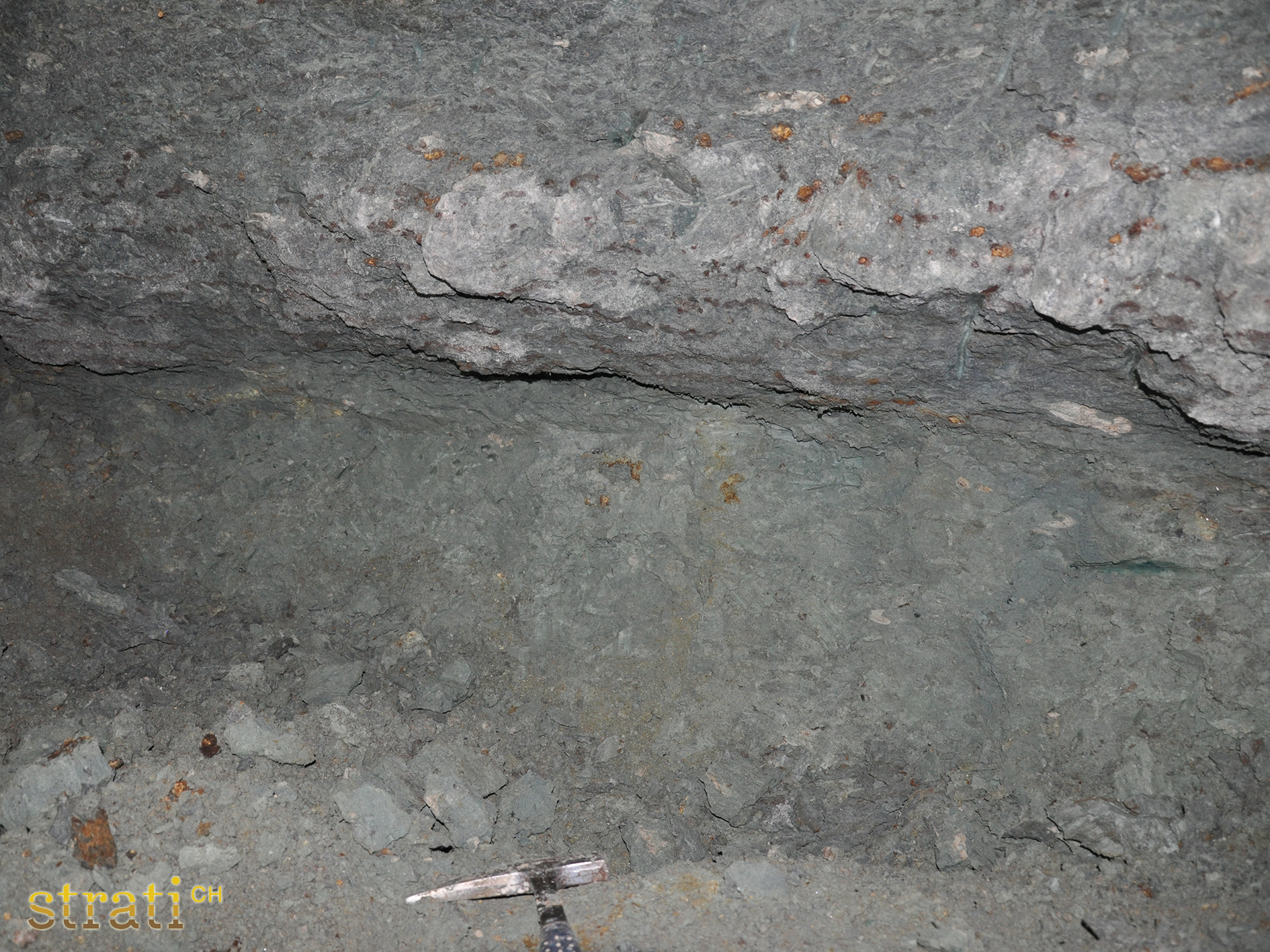Argile de La Presta
Zurück zu JuraDarstellung und Status
- Farbe RGB
- R: 245 G: 170 B: 170
- Rang
- lithostratigraphische Bank
- Gebrauch
- Element ist in Gebrauch
- Status
- informeller Begriff
Nomenklatur
- Deutsch
- La-Presta-Tonstein
- Français
- Argile de La Presta
- Italiano
- Argilla della Presta
- English
- La Presta Claystone
- Herkunft des Namens
-
La Presta (NE), Val de Travers
- Historische Varianten
-
gisement d'Albien du Baliset = argiles albiennes = argile panachée (Schardt & Dubois 1905), Marnes pyriteuses (Rollier 1912a), Marnes de la Presta, Presta Beds (Pictet et al. 2016)
Links
- Synonyme
Beschreibung
- Mächtigkeit
- Max. 1 m dans la région de Bellegarde-sur-Valserine, env. 12,5 m dans la région de Sainte-Croix et près de 30 m à La Presta.
Hierarchie und Abfolge
- Übergeordnete Einheit
- Hangendes
- Liegendes
Alter
- Alter Top
-
- Mittleres Albien
- Bermerkungen zu Top
-
Début de l'Albien moyen: Zone à Acanthoplites intermedius
- Alter Basis
-
- Frühes Albien
- Bermerkungen zu Basis
-
Fin de l'Albien précoce: Zone à Acanthoplites intermedius (+ fossiles remaniés de la Zone à O. subhili)
- Datierungsmethode
-
Biostratigraphie des ammonites (Pictet in prep.)
Geografie
- Geographische Verbreitung
- Jura neuchâtelois (La Presta, Le Baliset/Rochefort), Jura méridional (Bellegarde-sur-Valserine).
- Typusregion
- Val-de-Travers (NE)
Paläogeografie und Tektonik
-
- Kreide des Juragebirges
- Tektonische Einheit (bzw. Überbegriff)
-
-
Jura
:
Juragebirge
-
Jura
:
- Herkunftstyp
-
- sedimentär
- Metamorphose
- unmetamorph
Referenzen
- Neubearbeitung
-
(2016) :
The Perte-du-Rhône Formation, a new Cretaceous (Aptian-Cenomanian) lithostratigraphic unit in the Jura mountains (France and Switzerland). Swiss J. Geosc. 109/2, 221-240
From the base to the top of the Mussel Mb, five subunits have been identified (Fig. 8).
The fourth one, the Presta Beds (S10, Figs. 4, 8j–k), is represented in the Meridional Jura by a 0–1 m thick green marly mudstone. In the Central Jura, it is a 0–30 m thick
grey clay. The Presta Beds contains a rich phosphatic or pyritized macrofauna mainly dominated by the necton (*26 ammonites taxa, Fig. 8l, Pictet and Roux 1847– 1854, Pictet and Campiche 1858–1871, Renz and Jung 1978; sharks).


